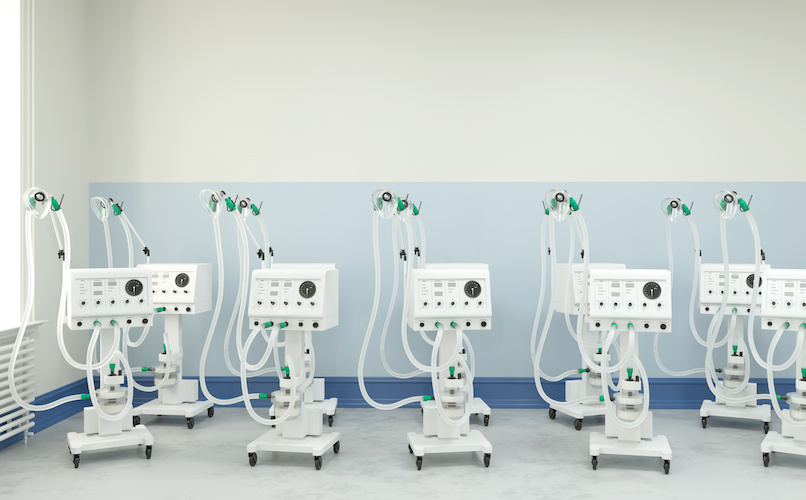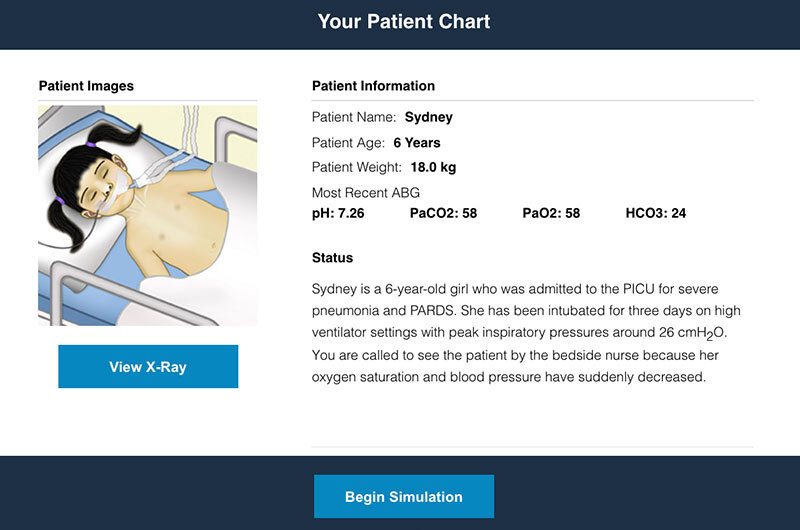Online ventilator training addresses COVID-19 clinician shortage

While hospitals around the nation and the world scramble to locate enough mechanical ventilators to treat an influx of patients with COVID-19, many also fear a clinician shortage that will grow worse as the pandemic continues. “COVID-19 is straining the critical care workforce in ways we have never seen before,” says Traci Wolbrink, MD, associate in the Division of Critical Care Medicine at Boston Children’s Hospital.
A knowledge gap in mechanical ventilation
Many doctors and nurses have come out of retirement to help treat patients in hospitals overwhelmed by the pandemic. Medical schools around the country, including Harvard Medical School, have offered Class of 2020 students early diplomas so they can join the force of hands-on caregivers. As welcome and needed as they may be, many of these returning and newly minted clinicians will need foundational experience in critical care and mechanical ventilation.
An estimated 2 percent of patients with COVID-19 will develop life-threatening lung problems. Until the medical community has time to develop new therapies, mechanical ventilation is the only treatment for severe COVID-19-related respiratory failure.
“As the number of patients rises, hospitals will face a shortage of clinicians formally trained in proper ventilator use,” says Dr. Wolbrink. “Thus, hospitals need efficient, effective educational tools they can use to prepare non-ICU clinicians to assist critical care and emergency physicians during this health crisis.”
Typically, residents learn the fundamentals of mechanical ventilation during a month-long ICU rotation. The COVID-19 pandemic makes that type of training impractical. Instead, an online training tool, developed at Boston Children’s Hospital, is helping fill the knowledge gap. The online training takes just five hours to complete.

Ventilator training on an open platform
Dr. Wolbrink and her colleague, Jeffrey Burns, MD, MPH, chief of Critical Care Medicine, recognized the need for expanded ventilator training more than a decade ago. “At Boston Children’s, we have access to expert knowledge in how to care for critically ill children,” says Dr. Burns. “But children in developing countries and other underserved areas weren’t benefiting from that knowledge.”
To expand access to potentially life-saving therapies, Drs. Wolbrink and Burns created OPENPediatrics, an open access, online library of clinical best practices from around the world. The Ventilator Simulator was one of the first resources to go live on the OPENPediatrics website.
Immersive mechanical ventilator training, updated for a pandemic
Built on the best practices in adult learning and gaming, the simulator teaches the fundamental principles of mechanical ventilation in an immersive, simulated environment. Trainees apply skills and decision making in a simulated clinical environment, solving simulated problems and case examples with hints and individualized feedback. “Clinicians can practice using a ventilator on a computer with realistic patient scenarios, strengthening their skills before applying them in a clinical setting,” says Dr. Wolbrink.

When the severity of COVID-19 became apparent, critical care and mechanical ventilation specialists went to work to update the simulator. They incorporated the most recent evidence-based guidelines in adult and pediatric ventilation and added COVID-19 information and patient cases. They released the updated version on April 1, 2020.
How does online learning compare to hands-on training?
A peer-reviewed study compared the effectiveness of the five-hour simulated training to one month of ICU rotation. The paper, published in January 2020, reported that residents who completed five hours of simulated ventilation training exhibited a level of knowledge comparable to those who’d completed month-long rotations in an intensive care unit (ICU). While the researchers concluded that combining both types of training was ideal, the ventilation simulation proved as effective as traditional ICU rotations. Further, when tested two months after the training, residents trained online retained more knowledge of ventilation than their rotation counterparts.

Immediate response to the ventilator training
Response to the tool reflects the urgency of the need it serves. Posts on social media about the release of updated simulator with COVID-19 training generated nearly 1.3 million impressions on Facebook, Twitter, and Instagram within five days. In that time, the simulator was viewed more than 33,000 times in 145 countries.
“We’ve seen it posted on every online ICU forum,” says Dr. Burns, who believes there is no time to waste in getting the word out about the free training tool. “This is an intervention we can use right now and it can help save lives.”
Related: Could plasma from recovered COVID-19 patients help others?
Get more answers about Boston Children’s response to COVID-19, OPENPediatrics, and the latest release of the Ventilator Simulator.
Related Posts :
-

A safe, pain-specific anesthetic shows preclinical promise
All current local anesthetics block sensory signals — pain — but they also interrupt motor signals, which can be problematic. For example, ...
-

Model enables study of age-specific responses to COVID mRNA vaccines in a dish
mRNA vaccines clearly saved lives during the COVID-19 pandemic, but several studies suggest that older people had a somewhat reduced ...
-

New insight into the effects of PPIs in children
Proton-pump inhibitors (PPIs) are frequently prescribed to suppress stomach acid in patients with gastroesophageal reflux disease (GERD). Prescribing rates of ...
-

Creating the next generation of mRNA vaccines
During the COVID-19 pandemic, mRNA vaccines came to the rescue, developed in record time and saving lives worldwide. Researchers in ...





